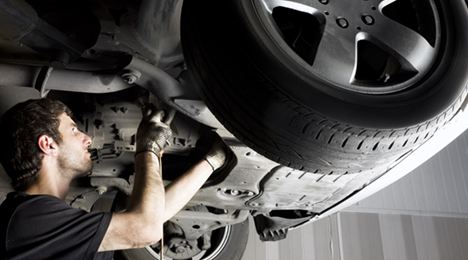Growing used business pushes Penske service & parts

Penske Automotive Group announced a record second-quarter and six months, which was driven in part by growing used retail sales and success in the service and parts business.
According to the conference call to discuss Q2 and six-month results, chairman Roger Penske reported the company retailed 49,500 used units in the quarter, representing an increase of nearly 9 percent.
The certified pre-owned sector, an ever-growing market segment, represented 38 percent of the company’s used sales ratio in the U.S., and the used-to-new ratio for the quarter came in at 0.84 to 1.
And more used sales means more action in the service and parts department.
Revenue for the company’s retail automotive service and parts business improved by 4.8 percent, including a 4.3-percent increase on a same-store basis.
“Excluding foreign exchange, same-store service and parts revenue increased 7.5 percent, customer pay was up 4 percent, warranty up 19.5 percent, body shops up 5.1 percent and our pre-delivery inspection was up 13.2 percent for a total of 7.5 percent, excluding for exchange,” Penske shared.
Service and parts gross margin was also up, improving 50 basis points to 60.2 percent.
What’s driving this growth in the service lanes?
J.D. Carlson, Penske’s chief financial officer attributes much of growth to ramped up services, efficiency and increasing used sales.
“What we've done is taken capacity where we've had single shift operations, we’re going to a second shift where we’re primarily doing our pre-delivery inspection in our pre-owned vehicles, and we’re getting more utilization,” Carlson said. “And I think that that’s proved to help us immensely.”
Also, he asked listeners to take a look at the improving new-to-used sales ratio, noting, “we’re getting more used vehicles, and that’s driving our parts and service.”
“And I think that's one thing as people concern themselves on lower margin on used cars, they really have to look at the full formula because every car that goes through your shop prior to delivery have some work done on those, it sets at margin and drives our parts and service,” Carlson said.
The company has focused on improving efficiency and has added about 200 service technicians to the lineup already this year, 77 of which work in the company’s body shops.
And as a downstream partner of OEMs, dealer groups like Penske are reaping the rewards of increasing business in their service departments in light of the recent influx of recalls.
“So to me, I think we’re really in a good spot here because the OEM cannot survive without the downstream partner. And I think that’s a message we have to give the investment community as we go forward in good shape,” Carlson said. “We've all invested in shops. We got the best equipment, and we’re getting more share of wallet. Oil changes front end alignments, tires, all of those things are playing a part of it.”
And with used supply expected to continue expanding, Penske management doesn’t think used sales will slow down anytime soon, and in turn, the service and parts business is expected to continue to improve, as well.
When asked about growing used supply, Penske pointed investors to stats that illustrate the significant growth in the current leasing market.
“And one of the benefits that I see coming, as we go into ‘16 and ‘17 on the premium luxury side in the U.S., there has been a huge amount of leasing and probably 50 percent to 55 percent, at least in our book of business is lease,” said Penske. “So, we get the opportunity to access those cars when they come back and I think with the certified, many of those become certified and with that, we get the benefit of running those cars through the shop, and we would spend anywhere from a $1,000 to $2,000 … In some cases, it replaces the tires for certification. So that adds internal gross profit.”
Penske also noted the company has large fleets of loaner cars, many of which are turning back over to the company, sometimes as frequently as two to three times a year.
“They’ve got some depreciation. They’ve got some support from the manufacturers. So those are very effective in our sale side. But to me, I think that that the used growth is really unlimited from the standpoint of us,” Penske said.
Penske’s growing used-car sales business could also be due in part to an increasingly difficult to navigate regulatory environment for the automotive industry — which can be too much of a burden for smaller, independent dealerships to bear.
“I think that you’re going to see more used-car volume because we are really wiping out, what I would say, some of the smaller used car lots on the corner, because the complexity of the cars to get them ready for resale or requirements by the government,” he said.
And with used volume up, and expected to continue to soar, Penske has high hopes for how his company’s pre-owned departments and service and parts business will benefit in the future.
“With our (used) volume up 5 percent to 8 percent, to me that’s key because I’m getting probably more gross profit. It gives my salespeople a chance to make more money. We get utilization of our service bays at night. So when you add it all together, it’s a bottom line benefit,” Penske concluded.

 View The Latest Edition
View The Latest Edition

